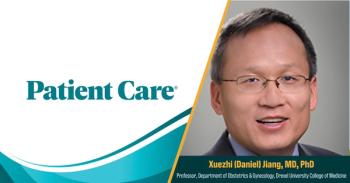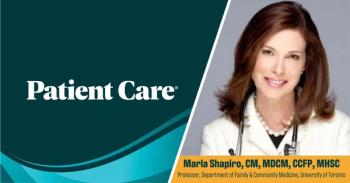
Primary Viewpoints Episode 2: Lipid Management in Preventive Cardiology
In episode 2 of Primary Viewpoints, lipidologist and preventive cardiologist Seth Baum, MD, discusses lipid management in preventive cardiology.
The following transcript has been edited for clarity and length.
Sydney Jennings: Hello and welcome to Primary Viewpoints from Patient Care® Online, a monthly podcast that features informative conversations with healthcare experts, opinion leaders, and practicing physicians about what impacts primary care medicine today. My name is Sydney Jennings and I am the Associate Editor at Patient Care® Online and in our second episode Grace Halsey, senior editor of Patient Care® Online talks with Seth Baum, MD, founder and chief medical officer at Excel Medical Clinical Trials, LLC, and a clinical affiliate professor of biomedical science in the department of integrative Medical Sciences at Florida Atlantic University's Charles H. Smith College of Medicine, about lipid management and preventive cardiology.
Grace Halsey: I want to start this morning asking you to talk about the state of ASCVD risk assessment in the United States in 2020. In the last 2 years, in 2018 and 2019, the American Heart Association and American College of Cardiology, put up 2 sets of updated guidelines: One on the management of blood cholesterol and the other one on primary prevention. That puts a lot of evidence-based information into circulation, pardon the pun. So how are we doing? What is the state of our foundation in terms of assessment?
Seth Baum, MD: It's a good question. As I watch you and hear you ask that question and talk and refer specifically to 2020, unfortunately, 2020 is not 2019 in that we have COVID. If you ask about 2020 specifically, the state of prevention is I would say terrible. Let's go back because of COVID, solely and strictly because of COVID, so let's go back to 2019. Then we can move forward again to 2020 and discuss some of the problems we're having, and how clinicians can address those problems and improve cardiovascular risk reduction. ACC/AHA did in 2018 come out with these very solid guidelines, but first of all take part of the problem and part of the problem is they're really long, as guidelines typically are, to address that there are specific algorithms and charts showing us how to address certain issues, but still, they're complex. But I think the important thing is to take away some meaningful messages that can help us manage risk, reduce risk, and, therefore, reduce the risk of cardiovascular events. The goal, ultimately, is to decrease heart attack, decrease stroke, decrease cardiovascular death, decrease hospitalizations for acute coronary syndrome, decrease heart failure, etc. That's the ultimate goal, so how do we get there? Well, one of the things that's emphasized is that LDL cholesterol is now understood to cause vascular disease. And I know that sounds simplistic, but I'm going to just repeat it because it's really, really important.
A lot of people don't really know this at this point. LDL causes vascular disease; it's not just associated with it. In other words, when you have a high LDL, it's not just you're also likely to develop heart attack or stroke or cardiovascular death. It's that it's causing that. We need to address LDL very aggressively, we need to lower very significantly, and we need to approach patients according to their risk. The highest risk patients, we address LDL most significantly. The lower risk patients, we address it, but it's not quite as. So that's one thing. These are overarching things, we can get into some numbers in a moment, but those are overarching ideas. Another very important finding or statement within the guidelines, is that we don't know a lower LDL bound. There's no boundary that we've really established saying, "Oh my God, that's just too low." We need to back off the medicine and get the LDL higher. In further support of that we have guidelines from ACE, the American Association of Clinical Endocrinologists as well as the European guidelines which came out in 2019, after our guidelines, and even more aggressively lower LDL and explicitly state, the causation that LDL has with regard to vascular disease. They go really far, they say it causes it, get LDL as low as possible, and by the way, if somebody has had a recurrent event on your maximal therapy that you put them on, get their LDL even lower under 40—40 becomes the goal in some of these patients. Although we have a target of 70 for our very high-risk patients, they have a goal of under 40. I think it's very hard to remember if a patient has 2 major risk factors and 1 minor or 2 minors and 1 major. When you have 30 patients a day or some people see 50 patients a day, you're not going to be able to do that. You need to know the general idea. The general idea is LDL is bad, it causes vascular disease, we have tools to fix that.
The first line—we'll get specific here—is statins always go with statins. First, try to maximize statin dose if you can. Understand, however, that even though we say have highest dose status for certain conditions, such as very high-risk patients. Lower doses, okay, if they can't tolerate it, you can always add on other agents like ezetimibe or the PCSK9 inhibitors. So, don't ignore a statin just because the patient can't tolerate the highest dose of a statin. Go to a lower dose and go to the massively tolerated dose of a statin. That really is how we should approach lipid management in cardiovascular disease prevention. We separate out also primary prevention and secondary prevention and primary prevention means somebody who has not yet had an event. How do we prevent secondary prevention if you've had an event? How do we prevent the next event? Well, from a secondary prevention standpoint, we have to remember these people are at very high risk for next event and if somebody has had ≥2 events, they're at even higher risk for another event. We are most aggressive with that. Going back to primary prevention (they haven't had an event), we need to look at what their risk is for an event, we need to do the pooled cohort equation and take a look. What's their 10-year risk? If they're a little bit younger, what's their lifetime risk? Their 10-year risk may not be that high, but if their lifetime risk is high, you got to be more aggressive, so we risk assess them. All that's doing is looking at certain features, like what's their LDL, do they have diabetes, do they not have diabetes. Sometimes we look at a calcium score to see whether they're at risk or Lp(a), which is another very bad player in lipoproteins. These are the things that we're looking at.
Grace Halsey: I guess the question is how are we doing? Are there benchmarks you're looking at?
Seth Baum, MD: Again, let's make it "how were we doing?" And then "how are we doing?" So how were we doing? We were doing better. If you use LDL as one of the benchmarks, unfortunately, in individuals who were very high risk—these are people who had 1 major heart attack, a stroke, or arterial disease, or 1 major and 2 minors or 2 majors—70% of them have LDLs >70. 70%. We've got about 30% well-controlled from an LDL standpoint. How well were we doing? Not incredibly well. Part of that problem is just not addressing LDL as though it's the enemy and we need to. Part of it is not going further with add-on therapies, to statin therapy, and that includes ezetimibe and PCSK9 inhibitors. When we've looked at that very high-risk group and seeing how many of them have had PCSK9 inhibitors prescribed, it's <1%. Here we have the most powerful drug available to lower LDL cholesterol and fewer than 1% of people who were the very high-risk group, have had it prescribed by their clinician. So not doing well enough. Also, with obesity rising we are not doing well enough. We have a lot of areas needed for improvement. Now, fast forward to today. You know what's happening: People are gaining weight, staying home, they're not exercising, they're staying home for their cardiovascular events. So, we're not even preventing an actual event from occurring. People are dying out of the hospital more frequently than they had been. We have a decrease in the in-hospital acute infarct and an increase in out of hospital death, cardiovascular death because people are scared to go to the hospital. That's a form of prevention, right? So, we're having problems.
Grace Halsey: I'm curious about how primary care utilizes the add-on therapies. They're well versed, I think, in use of statins. But what about ezetimibe and the PCSK9 inhibitors? I know for the latter, there is still probably an insurance barrier, but are primary care physicians paying attention to the next steps?
Seth Baum, MD: That's a great question. Often primary care practitioners do see the issue and do, frankly, want to start a PCSK9 inhibitor and they tend to defer to cardiology, and maybe cardiology doesn't do it as much as we should. My suggestion to the primary care providers is that they take the bull by the horn, and they prescribe the PCSK9 inhibitor and fight the insurance companies just like cardiologists do. And they'll win, you know, these drugs fell 60% a couple years ago, so we have access to them now. We just need to prescribe. From a prevention standpoint, we also have drugs for diabetes, the SGLT2 inhibitors and GLP-1 receptor agonists, that now have cardiovascular indications. So that's another area of prevention that primary care practitioners could be more involved in. I think to leave the prescribing of those drugs to the endocrinologist or to the cardiologist, frankly, is a mistake. Primary care practitioners should be the ones. They're on the front line. They're seeing these patients all the time and they need to prescribe these drugs, even if they get some pushback, frankly, from cardiology and endo. They need to prescribe them when they're indicated. Best of all possible worlds, of course, is to work in a collaborative, collegial fashion, and to speak to the cardiologists and speak to the endocrinologist, but sometimes it's hard to connect to these people, to other practitioners, and the patient needs to come first. If PCPs could address that, if they could prescribe the SGLT2s, the GLP-1s, the PCSK9 inhibitors, and ezetimibe, we can make an enormous change in prevention. I'd like to emphasize one other thing though, and that's therapeutic lifestyle changes. These are the things that are tending to fall apart now with COVID. The exercise, the diet, stress reduction. That too can be emphasized from a PCP standpoint. I know it sounds like I'm putting a whole burden on the PCPs, but they are the front lines. You guys are the front lines and it would be really helpful if you did this, even if you got pushback.
Thank you for listening to this episode of Primary Viewpoint. To hear more episodes on a variety of clinical practice topics, visit
Newsletter
Enhance your clinical practice with the Patient Care newsletter, offering the latest evidence-based guidelines, diagnostic insights, and treatment strategies for primary care physicians.































































































































































































































































































